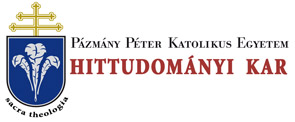Folia Theologica et Canonica, Supplementum (2016)
Szabolcs Anzelm Szijromi, O.Praem., Relationship among the Holy See, Czech-, Polish-and Hungarian Kingdoms in the 13"'-14" century
RELATIONSHIP AMONG THE HOLY SEE, CZECH-, POLISH- AND HUNGARIAN KINGDOMS 203 this theoretical stand point the popes were also intended to fulfill the political unity of the human society. This is especially true concerning the promotion of the international peace. In the same epoch of the ecclesiastical history, we can see the remarkable influence by the papal legates on the development of the international diplomacy. The activity of these chosen representatives of the Roman Pontiff also incited the formation of the definitive status of the stately diplomats as ambassadors. From the 5,h up to the 13th century the temporal mission of the papal legates was a unique institution in the European diplomacy and in international relations. The secular rulers were also sending messengers for a diplomatic mission from the 13lh century, basically diocesan clerics (even bishops) or religious - Dominican and Franciscan friars -. Those solemn agreements which were erected between the Holy See and a particular state in the 13th-14,h centuries were composed from two privilege-letters. These letters regulated the conditions of the legitimacy of reign of the secular ruler; his obligations and rights; the prerogatives of the Holy See; the protection of the Catholic faith; the appointment of bishops and their activity; moreover the rules concerning the dioceses. This type of document gave guarantees for preserving the independence of the ecclesiastical power.24 Describing the complex contemporary Church and state relationships, negotiations and decisions, the best example is the history of Emperor Frederick IFs political maneuvers. Nevertheless, this time contained many unfortunate components on the military and ecclesiastical political level, because the frequented changes and a “sede vacante” period at the head of the Church (i.e. Gregory IX [1227-1241], Celestin IV [ 1241 ], Innocent IV [ 1243-1254]). The secular political situation was often changing too, which involved not only Emperor Frederick II’s activity, but also the Hungarian King, Adalbert IV’s military and ruling ambitions. For illustration, we refer here only his siege which intended to occupy Olo- mouc, and was given up because the deputy of Pope Innocent IV.25 We cannot forget that few decades after this very complex historical period of the 13lh century had arisen the so called “captivity” of the popes at Avignon (1305/1309- 1376/1377), then the "Western Schism of the Church” (1378-1417). This diversification within the European Christianity caused more internal conflicts not only in the Church but in the secular society, moreover in the relation to the papacy too.26 Regarding the international political circumstances in the 13lh century we have to list three fields here. The first one is the Vlb Crusade 1213-1221 which 24 Szúrom I, Sz. A., Concordats of the Middle Ages (between 1098 and 1418), in Szuromi, Sz. A. (ed.), Concordatary Law (Bibliotheca Instituti Postgradualis luris Canonici Universitatis Catholicae de Petro Pázmány nominatae 1/6), Budapest 2008. 30-31. 25 Fraknói, V., Magyarország egyházi és politikai összeköttetései a Római Szent-Székkel, I. Budapest 1901.69-70. “ Ullmann, W., A Short History of the Papacy in the Middle Ages, 279-305.
